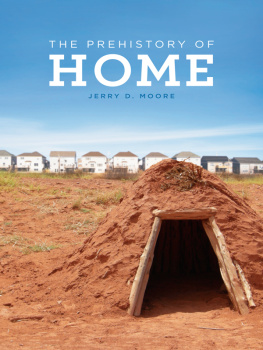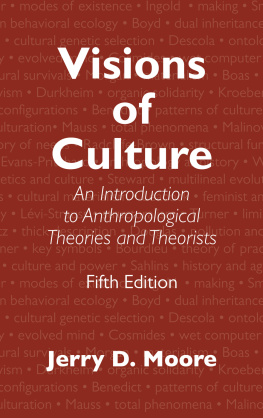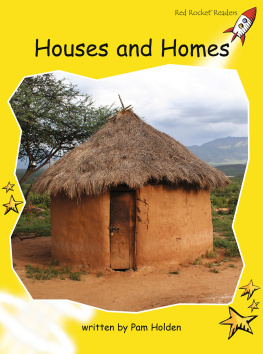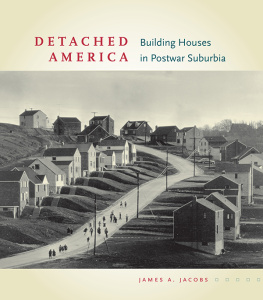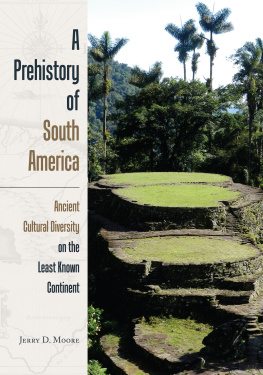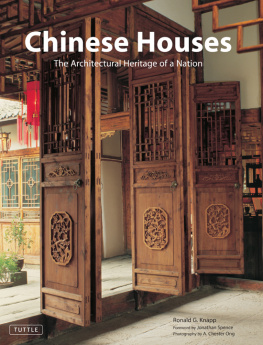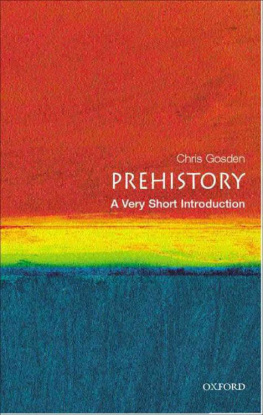The Prehistory of Home
The Prehistory of Home
Jerry D. Moore

University of California Press, one of the most distinguished university presses in the United States, enriches lives around the world by advancing scholarship in the humanities, social sciences, and natural sciences. Its activities are supported by the UC Press Foundation and by philanthropic contributions from individuals and institutions. For more information, visit www.ucpress.edu.
University of California Press
Berkeley and Los Angeles, California
University of California Press, Ltd.
London, England
2012 by The Regents of the University of California
Library of Congress Cataloging-in-Publication Data
Moore, Jerry D.
The prehistory of home / Jerry D. Moore.
p. cm.
Includes bibliographical references and index.
ISBN 978-0-520-27221-7 (cloth : alk. paper)
1. Dwellings, Prehistoric. 2. Architecture, Prehistoric.
3. Home. 4. Social archaeology. I. Title.
GN799.B8M66 2012
392.3'60901 dc23 2011035704
Manufactured in the United States of America
21 20 19 18 17 16 15 14 13 12
10 9 8 7 6 5 4 3 2 1
In keeping with a commitment to support environmentally responsible and sustainable printing practices, UC Press has printed this book on Rolland Enviro100, a 100% post-consumer fiber paper that is FSC certified, deinked, processed chlorine-free, and manufactured with renewable biogas energy. It is acid-free and EcoLogo certified.
Contents
Illustrations
Acknowledgments
Digressions, incontestably, are the sunshine;they are the life, the soul of reading!
Laurence Sterne, Tristram Shandy
It is customary to thank ones family at the end of the acknowledgements, but in this case it would be utterly inappropriate. My wife and colleague, Janine L. Gasco, and our son, Nathan Moore, read various versions of this manuscript, pointed out weakness in its organization and my explication, and through it all remained steadfastly supportive. More importantly, Jan and Nate are my home, and thus shaped this entire project and my scholarly interest in home in profound and subtle ways. This book is dedicated to Jan and Nate, who bring me home.
I am also privileged to have a group of friends and colleagues who read and commented on this project, when it was just a loose set of ideas that were progressively transformed into a book. I am particularly indebted to Brenda Bowser, Andrew Stewart, and Leah Weed for their careful insights on previous drafts. I also want to thank Bill Fox for his support of this project from its inception, his insights into place-making, and for his companionship on archaeological journeys in Baja California and Chile. I also appreciate the constant support provided by other friends and colleagues including Joanne Pillsbury, Helaine Silverman, and Charles Stanish.
For scholars who answered specific questions about their respective fields of research, I thank Patricia J. OBrien, Professor Emerita, Department of Sociology, Anthropology, and Social Work, Kansas State University; and Esther Jacobson-Tepfer, Maude I. Kerns Professor Emeritus, Department of Art History, University of Oregon. For permissions to reproduce original artwork I want to thank Meredith Chasson and Eric Carlson, Notre Dame University; Janine Gasco, California State UniversityDominguez Hills; Stephanie Hawkins, New Mexico State University; John Middendorf; Christopher Rodning, Tulane University; and Santiago Uceda, Universidad Nacional de Trujillo, Peru. A full list of illustration credits is found on page 261.
I would like to acknowledge the granting agencies who have supported my archaeological projects over the last three decades, investigations that are discussed at various points in this book: National Science Foundation/Archaeology Program (19811982, Manchan; 19981999, Baja California; 20062007, Tumbes); the Wenner-Gren Foundation for Anthropological Research (1995, Baja California; 2010, Per and Ecuador); National Geographic Society/Waitt Grants Program (20102011, Baja California); the H. John Heinz Foundation (1996, Tumbes); the University Research Expeditions Program, University of California (1986, Quebrada Santa Cristina); the Curtis and Mary T. Brennan Foundation (2003, Tumbes); and the CSUDH Research and Scholarly and Creative Activities Program (1991, 1994, 1995, Baja California; 2000, 2003, Tumbes).
At the University of California Press, I want to thank Blake Edgar, for his support and guidance of this project. Although inundated by book pitches at an annual archaeology meeting, Blake expressed interest in this book, stimulating me to actually complete a long-considered project. I also thank Hannah Love at the University of California Press, for her cheery assistance. I particularly appreciate the calm guidance of Lynn Meinhardt, editorial coordinator, Science Publishing Group, at the University of California Press, who shepherded this book into existence, and to Marilyn Schwartz, managing editor at the University of California Press, for seeing the project through to conclusion. I also grateful for the careful copy-editing provided by Jennifer Eastman. I am deeply indebted to all these individuals for all their contributions.
I am grateful to Wendy Ashmore, Professor of Anthropology, University of CaliforniaRiverside, and two anonymous readers for reviewing the manuscript for University of California Press; it was gratifying that these three scholars understood the objective and audience of this book.
The final manuscript was prepared with modest support from the California State UniversityDominguez Hills grant, providing a course off from a normal heavy teaching load. I want to thank my colleagues in the Department of Anthropology, California State UniversityDominguez HillsJan Gasco, Susan Needham, and Ana Pitchonfor creating such a supportive academic environment in which to work. Also at CSUDH, I want to thank Dr. Sandra Parham, Dean of the Library, and Ms. Faye Phinsee-Clack, Inter-Library Loans, for their support of my research and writing projects.
Finally, I must acknowledge the efforts and insights of the scores of archaeologists whose investigations are summarized in this book. As I researched this book, reading the sometimes dry and technical reports of archaeological dataa genre as spare as haikuI was so impressed by the scope and detail of research by my fellow archaeologists. As an archaeologist, I understand the difficulties involved in fieldwork, the painstaking and meticulous lab work that understatedly summarized in a simple data table or figure. In their independent but ultimately collective efforts, the archaeologists discussed in the following pages and referenced in the footnotes have recovered the fragments of the past, preserved it for future generations, and illuminated the contours and specifics of the human experience. I and any person interested in the question What does it mean to be human? all stand in their debt.
CHAPTER 1
The Prehistory of Home
Our trowels scrape through time. A dozen of usarchaeologists, students, and workmenare excavating in far northern Peru. Digging through hard layers of ash-black clay and past thick jumbles of ancient oyster shells, we carefully scoop up the loosened midden and sieve it through dry shaker screens, trapping durable potsherds and glinting flakes of obsidian. We watch for traces of archaic structures: postholes from long-gone timbers, subtle variations in soil color and texture, a slightly more compacted surface. We speak in low voices as we dig, afraid that any distraction will cause us to miss the ancient traces of home.
Various animals build shelters, but only humans build homes. Humans build dwellings in different environments, constructed with diverse materials and in distinct forms, and associated with nuanced meanings. We have done this for millennia.
Next page
